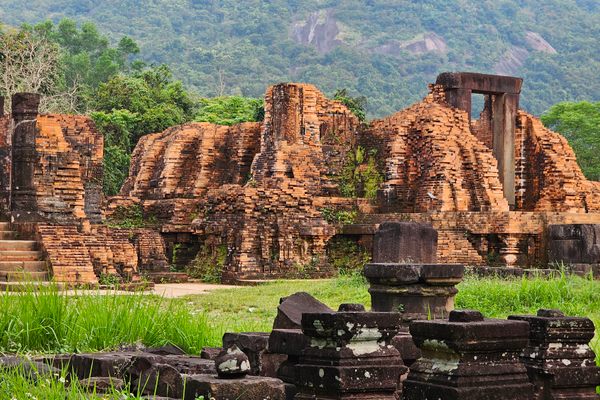About
The history of Africa, and the Rift Valley in particular, is not a static one. Throughout history, the movement of different groups of people - hunter-gatherers, pastoralists, agriculturalists - have created one of the most unique and complex landscapes on the planet. The archaeological remains of this part of the world thus remain enigmatic, with few links between the people who created them and those who inhabit the area in the present day. So it is with the Engaruka ruins, which today overlook a dusty arm of the Rift Valley in north-western Tanzania.
The story, as told by the archaeology, is vague. Sometime in the 15th century, locals began experimenting with the small-scale cultivation of indigenous African crops such as millet and sorghum. Over the next three centuries, however, their success in these small-scale endeavors led to a vast expansion in the farming system and a significant increase in population. A huge amount of labour was invested over this time in building furrows to canalize the Engaruka River and redistribute water to the fields, which sprawled at the foot of the Rift escarpment. Large terraces were constructed, repaired, and reconstructed such that over time, they reached a cumulative height of over 3 meters in places. On the slopes overlooking these fields, villages expanded to incorporate a burgeoning population, which at its height may have included over 8000 men, women, and children.
Visiting the site today, its location does nothing to betray its prominent history. What once may have been one of the biggest inland centers in eastern Africa is now a quiet corner of Tanzania, on the edge of the much more popular and touristic Ngorogoro Conservation Area. The road to get here is long and unpaved. You must either catch the bus that runs twice a day from Mto wa Mbu on the shore of Lake Manyara, or else risk life and limb on a one-and-a-half-hour dirt bike (‘Piki-Piki’) ride through the bush. Either way, you are not likely to encounter any of the safari traffic of Ngorogoro, but instead the rush-hour gridlock of dozens of Maasai pastoralists herding their goats in the middle of the road. Once here, the climb up the Rift escarpment to the location of the village can be brutal in the midday 40°C heat. You may wonder, among the other unsolved mysteries of the site, why in God’s name the inhabitants of Engaruka chose to build on a slope like this. Then, looking back over the abandoned field system stretched out below, you may begin to realize what a huge project the building of this site was, and what a significant place it must have been. Tally this with how little is known about the site, and the questions multiply.
For all its "natural" wonders, the human agency that created the landscape of eastern Africa is often overlooked. In fact, much of what is considered ‘natural’ about the east Africa landscape is the product of thousands of years of human interaction with and within the environment. The Serengeti plains, for instance, are a carefully managed anthropogenic landscape that has been shaped through the sustained grazing of pastoralist herds for the past two thousand years. This makes Engaruka even more important as a site: for standing out as a testament to the rich human history of an area of the world whose human history is often forgotten.
Sometime in the 18th century, the villages of Engaruka were abandoned and the fields at the foot of the Rift escarpment ceased to be cultivated. On par with the rest of what is known about the site, the reasons for this sudden desertion are unexplained. Nowadays, locals at the modern village of Engaruka, about four kilometers from the ancient site, have their own theories about who lived here 500 years ago, while archaeologists return again and again with ever more elaborate equipment to answer ever more elaborate questions. The answers to these questions, however, will necessarily rely in part on mere speculation.
Related Tags
Know Before You Go
Local buses run twice a day in the afternoon from Mto wa Mbu to Engaruka, journey time about 1.5 hours. Alternatively, local motorbike taxis ('Piki-Pikis') can be hired to make journeys out to Engaruka village.
Community Contributors
Added By
Published
October 28, 2014

























